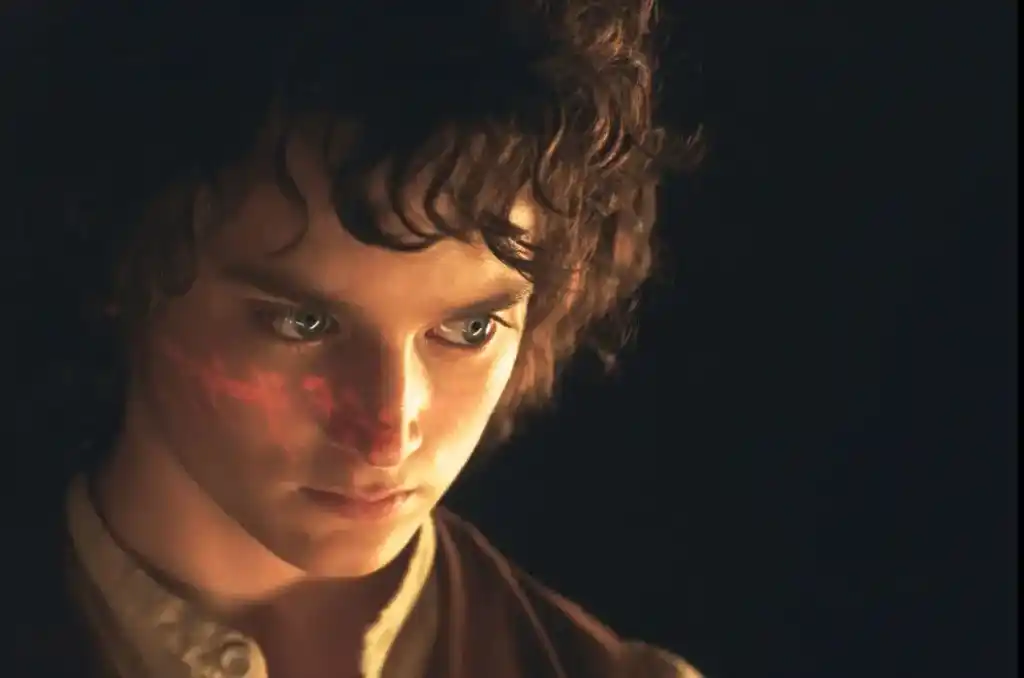A great story doesn’t just happen by chance — it’s built from a few essential elements, such as characters, conflict and plot, that all work together to create a compelling narrative.
Whether you’re writing your first short story or refining a novel, mastering these key components is crucial. In this guide, we’ll break down each one and explore how they come together to bring your story to life.
Let’s start with the real stars of the show…
1. Characters
Characters are the heart of your story. They drive the narrative and give readers a window into its world and events. There are three fundamental types of characters that form the backbone of most narratives: protagonists, antagonists, and supporting characters.
🦸♂️ Protagonist
This is your main character, the one whose journey readers follow most closely. Think detective Hercule Poirot or Harry Potter.
A compelling protagonist typically has:
- Clear goals and motivations (e.g., Katniss Everdeen's drive to protect her sister and survive the Hunger Games)
- Flaws and strengths that make them relatable (e.g., Tony Stark's brilliance coupled with his arrogance and alcoholism in the early Iron Man films)
- The potential for growth and change (e.g., Ebenezer Scrooge’s transformation from a miserly curmudgeon to a generous soul in A Christmas Carol)
Read our post on how to write a main character for more details!
🧟♂️ Antagonist
This is the force that stands in your protagonist's way. The antagonist could be a villain like Voldemort, but it could also be a societal constraint, dystopian technology, or a natural disaster.
These are some of the most common features of antagonists:
- They have understandable (even if not sympathetic) motivations (e.g., Killmonger in Black Panther, whose methods are extreme but whose concerns about oppression are legitimate)
- They create meaningful obstacles for the protagonist (e.g., Captain Ahab's obsession with the white whale in Moby Dick ultimately leads to his destruction)
- They challenge the protagonist in ways that force growth (e.g., Amy Dunne in Gone Girl forces Nick to confront his complacency and selfishness)
Read our post on great antagonists for more insights!
👲 Supporting Characters
Figures like mentors, allies, love interests, or comic relief characters enrich your story world. Supporting characters usually:
- Serve a specific purpose in the story (e.g., Samwise Gamgee providing unwavering loyalty and moral support to Frodo in The Lord of the Rings)
- Have their own goals and personalities (e.g., the distinctly different personalities of bookworm Hermione Granger and goofball Ron Weasley in the Harry Potter series)
- Emphasize different aspects of the protagonist (e.g., John Watson often praises Sherlock Holmes' brilliance while also tempering his antisocial tendencies)
A great story has the right mix of characters who challenge, complement, and transform one another, creating a rich tapestry of personalities that readers can't help but invest in emotionally.
Now, let’s dive into the second key element of a compelling story…
2. Conflict
Conflict is what makes your story interesting by adding stakes and tension that keep readers engaged. In general, conflict falls into two major categories: internal and external.
🪞 Internal Conflict
These are the battles your characters fight within themselves. For example:
- Moral dilemmas: When characters must choose between conflicting values or ethical principles, e.g., in The Dark Knight, Batman struggles with whether to reveal his identity to save lives.
- Identity struggles: Characters questioning who they are or what they believe, e.g., in Moonlight, Chiron grapples with his sexuality and authentic self across three pivotal life stages.
- Emotional hurdles: Characters overcoming feelings such as fear, guilt, or grief, e.g., in Manchester by the Sea, Lee Chandler must confront overwhelming guilt about his past before he can move forward.
🥊 External Conflict
These are struggles against outside forces. For example:
- Character vs. Character: The traditional protagonist against antagonist setup, e.g., in The Silence of the Lambs, former FBI agent Clarice Starling matches wits with serial killer Hannibal Lecter.
- Character vs. Society: Individuals challenging societal norms or institutions, e.g., in The Hate U Give, Starr Carter confronts systemic racism following the police shooting of her unarmed friend.
- Character vs. Nature: Characters surviving or overcoming environmental challenges, e.g., in Life of Pi, a young Indian boy named Pi must survive alone on a lifeboat with a Bengal tiger.
- Character vs. Technology/Supernatural: Battles against forces that are beyond normal human experience, e.g., in The Exorcist, Father Karras fights against demonic possession.
The most memorable narratives often interweave both types of conflict to create rich, multi-layered tension — the physical journey would ideally parallel and amplify the emotional one. In Lord of the Rings, for example, Frodo's external quest to destroy the One Ring is mirrored by his internal struggle against its corrupting influence.

Conflict is essential to a story. But how it’s introduced, escalated, and solved will be determined by another key element of the story…
3. Plot
The plot of a story serves as the framework that holds everything together and deeply influences how the narrative unfolds. At its core, it’s merely the sequence of events that happen in your narrative. But it’s not just about what happens 一 it’s about when those events happen and how they connect to create an engaging journey.
While stories can follow different structures (like the Hero’s Journey or Freytag’s Pyramid), most of them incorporate at least some of six core elements (which I’ll quickly illustrate with the example of The Hobbit by J.R.R. Tolkien):
- 🌅 Exposition: This introduces your characters, setting, and the status quo that's about to be disrupted (e.g., Bilbo lives a comfortable life in the Shire.)
- ⚡ Inciting Incident: The event that kicks your story into motion, disrupting the ordinary world and setting your protagonist on their journey (e.g., Gandalf arrives and volunteers Bilbo to join a group of dwarves to go on an adventure.)
- 🤺 Rising Action: A series of events that build tension and raise the stakes as your protagonist faces increasingly difficult challenges (e.g., Bilbo and the dwarves go through increasingly dangerous encounters with trolls, goblins, and spiders.)
- 💥 Climax: The turning point of your story where tension peaks and your protagonist faces their greatest challenge (e.g., the Battle of Five Armies)
- ⛷️ Falling Action: The aftermath of the climax where loose ends start to get resolved and consequences unfold (e.g., the division of the treasure after the battle)
- 😌 Denouement: The final resolution where your story reaches its conclusion and a new normal is established (e.g., Bilbo's return home to the Shire, forever changed by the adventure.)
All these elements come together to shape compelling plotlines. But an element that should never be forgotten — and is just as important as all the others previously mentioned! — is where the story takes place…
4. Setting
A well-crafted setting doesn't just tell readers where and when the story’s taking place. It also notably shows them how that environment affects the characters and their choices.
Setting can function in different ways throughout your narrative. It can serve as a challenge (e.g., in The Martian, the harsh Martian landscape becomes Mark Watney's primary antagonist, forcing him to innovate to survive), and it can also reflect the internal state of your characters (e.g., the oppressive atmosphere of the Overlook Hotel in The Shining progressively mirrors Jack Torrance's deteriorating mental state, transforming from majestic to menacing as his grip on reality slips).

Here are the main components of setting:
- 🏙️ Time: Historical era, season, time of day (e.g., the oppressive heat of summer afternoons in 1930s Alabama that heightens tensions in To Kill a Mockingbird)
- 🏙️ Place: Geographic location, climate, terrain (e.g., the vast, unforgiving desert of Arrakis shapes the hardy Fremen culture in Dune)
- 🏙️ Culture: Social norms, political systems, economic conditions (e.g., the rigid class hierarchy that constrains characters in Pride and Prejudice)
- 🏙️ Atmosphere: The mood or feeling evoked by the environment (e.g., the gothic, foreboding presence of Thornfield Hall reflecting Jane's uncertain future in Jane Eyre)
When done right, a setting can be just as memorable as the main characters! Now, how a setting is introduced in a story will depend on the narrator’s perspective…
5. Point of View
The point of view (POV) determines who tells the story and affects everything, from the information revealed to readers to the emotional connections they form with the characters.
Here are the various types of POV used in narrative:
📝 First Person: The narrator is a character within the story, using "I" or "we." It’s great to create intimacy and show a character's internal thoughts (ideal for memoirs or coming-of-age novels).
Example: "I couldn't tell if the witness was lying."
📝 Second Person: The narrator addresses the reader directly as "you." Mostly used in short fiction, it creates immediacy and makes the reader an active participant.
Example: "You instruct the chief of police to bring the prisoner to your office."
📝 Third Person Limited: The narrator focuses on one character's perspective at a time. It provides some distance while still exploring character interiority. It’s common in thriller and mystery novels.
Example: "She couldn't tell if the witness was lying."
📝 Third Person Omniscient: The narrator knows the thoughts and feelings of all characters. This POV is ideal for exploring multiple perspectives and providing broader context, like in an epic fantasy saga.
Example: "He thought the witness was honest, but she didn't think the same of him."
While most stories are told in first or third person, remember that the POV you select isn't merely a technical choice. It affects how readers experience events, what they end up learning, and the emotional connections they form with your characters. And, in part, it also affects the meaning they take away from a story…
6. Theme
The theme is the underlying message or universal truth your story explores. After all, a good story should invite readers to reflect on larger questions about human experience.
George Orwell's 1984, for example, doesn't just tell a tale of dystopian surveillance — it also challenges readers to consider the relationship between language, thought, and freedom. Similarly, Toni Morrison's Beloved uses a ghost story to explore how historical trauma haunts generations long after the initial wounds form.
There are many common themes in narrative, such as good vs. evil (as in Tolkien's Lord of the Rings), power and corruption (central to Shakespeare's Macbeth), or love and sacrifice (as in Austen’s Pride and Prejudice). Yet even familiar themes feel fresh when explored through unique characters and situations.
The best themes arise naturally from the interaction of character, plot, and setting rather than being explicitly stated. The Great Gatsby never directly states "the American Dream is corrupt" — instead, F. Scott Fitzgerald reveals this through Jay Gatsby's doomed pursuit of wealth and love, the decadence of the Jazz Age setting, and the hollowness beneath the characters' glittering lives.
When a story theme emerges organically instead of through heavy-handed messaging, readers discover the truth on their own terms, making their reading experience a lot more powerful.
And that’s a wrap! Great stories weave these six elements together so seamlessly that readers don't even notice the individual components, but simply experience an engaging narrative. By understanding these building blocks, you'll develop a deeper appreciation for the stories you love and stronger skills for creating your own memorable tales!










This is great stuff, I especially love the part about sub plots. I like to try to have several detailed subplots in my action adventure novels
Infostack - About 7 years ago
They are useful indeed for making an initial idea more expansive and complex. Thanks for reading and sharing your thoughts.
Bridget At Now Novel - About 7 years ago